Announcements
 |
Team of University of North Texas researchers awarded $600,000 NSF grant to develop sustainable building materials Researchers at the University of North Texas are on the verge of revolutionizing the construction industry by developing natural alternatives to fiberglass and other popular, non-biodegradable building materials. Four UNT researchers recently received almost $600,000 to develop sustainable, energy-efficient and multifunctional bioproducts for construction purposes from the National Science Foundation's Partnership for Innovation program. The program connects researchers and small businesses in an effort to transform knowledge created by academic research into innovative solutions for the real world. UNT will work with InnoVida Southeast in Miami, Fla., and Ladonia Market Center (LMC) in Ladonia, Texas, to develop composite panels that use plant fibers in the place of glass fibers. The UNT team will be led by Dr. Nandika D'Souza, professor of materials science and engineering, who will oversee the design and creation of the new materials. The composite materials could be used for construction, cars and aircraft and for a number of other uses. Currently, 3 to 5 billion pounds of fiberglass are produced annually. |
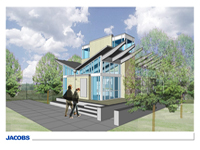 |
UNT to build Zero Energy Research Laboratory The University of North Texas is leading the charge to produce a quality green-collar workforce by building a state-of-the-art Zero Energy Research Laboratory, where students and faculty will get first-hand experience with sustainable energy technologies of tomorrow. The facility is designed to test emerging technologies that allow building systems to have a net-zero consumption of energy, and once completed will be the first of its kind in the United States. The UNT Board of Regents approved the facility on June 17 (Friday), and construction on the lab is slated to begin in July at UNT's Discovery Park, a 300-acre research campus. The 1,200 square-foot structure is expected to be completed in early 2012. The building will include a main utility core, a bathroom with a shower, a small kitchen with a refrigerator and an open flexible laboratory space for research. Initially, the facility will be powered by solar energy and will be expanded to include other alternative energy sources such as wind to allow a wide range of zero-energy building research. |
 |
Sustainable eco-center aims to transform Puerto Williams into a landmark conservation destinationr An initiative is underway to build a Sub-Antarctic research and educational conservation center in Puerto Williams, Chile, to bring awareness to the unique ecosystems and indigenous culture of the Cape Horn Biosphere Reserve and archipelago — a UNESCO world heritage site and labyrinth of pristine forested wilderness, islands, fjords, Andean highlands and wetlands located at the southernmost tip of the South American continent. The Sub-Antarctic Biocultural Conservation Program — a collaborative research alliance between the University of North Texas (UNT), the Institute of Ecology and Biodiversity (IEB), and the University of Magallanes (Umag) — is leading the proposal to build the eco-center. Conceived as a strategic international destination for conservation education, the future center will be built near the Program’s research field station in the Omora Ethnobotanical Park, a site of unique biodiversity and natural beauty based on Navarino Island. Together, the center and field station will constitute a major research conservation hub, offering an exhibition gallery and sustainable tourism courses that serve the general public, guest researchers and students, with access to cutting edge research tools and some of the world’s most distinguished conservation scientists. “This center will help humanity to discover the jewels and the treasures hidden in the biodiversity of Cape Horn that have not yet been seen, illuminating and making it visible to the world,” said Kenneth Sewell, associate vice president for research at the University of North Texas. Dr. Sewell visited the proposed site in early April with a team of architects, ombudsmen and partner institutions. |
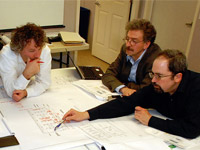 |
Expanding research With the help of its collaborative research clusters, UNT is making strides toward becoming a major research university. In 2008, the university launched the first phase of the research cluster initiative with the goals of advancing research, strengthening the state’s economy and developing technology vital to addressing today’s most pressing needs. With two years’ momentum behind them, these clusters have attracted top faculty and students and continued groundbreaking research. UNT expanded its commitment to the initiative in the fall by investing in four new research teams and five areas of strategic development.
|
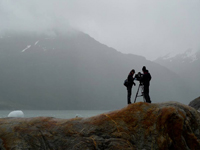 |
BBC/Discovery Channel Film Documentary in the Cape Horn Biosphere Reserve February 2011- Punta Arenas, Chile — Cape Horn is globally known as a landmark for sailing and as the closest point of land to Antarctica, where hurricane force winds and torrential rains lash the coast year round. However, increasingly, thanks in part to the work of the Sub-Antarctic Biocultural Conservation Program (SABCP), it is becoming equally renowned for its diverse climates and ecosystems that create a unique combination of biological and cultural diversity. |
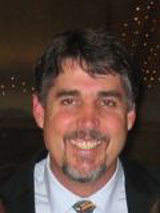 |
Plant metabolic engineering expert joins UNT’s Renewable Bioproducts research cluster February 2011 |
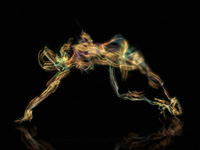 |
Dancing with Wires
The Initiative for Advanced Research in Technology and the Arts (iARTA) research cluster presents ARTTEC - four evenings of conversation with leading interdisciplinary artists, curators and scholars at the nexus of art, engineering and science: Norah Zuniga Shaw: Director for dance & technology at the Advanced Computing Center for the Arts and Design at Ohio State University - her recent projects include work with William Forsythe on his acclaimed Synchronous Objects. Paul Kaiser: Artist, writer and member of the OpenEnded Group, an artists’ cooperative whose works span dance, music, installation, film, and public art - luminary collaborators have included Robert Wilson, Merce Cunningham and Bill T. Jones. Moderator: David Bithell The ARTTEC series invites an international group of prominent iARTA Advisory Board members to UNT to explore emergent art and technology practices across a wide spectrum of disciplines. This freewheeling conversation series, moderated by associated UNT faculty members, will serve as both an informative introduction to the field and delve into some of the ideas redefining artistic practice in light of 21st century challenges and innovations. The ARTTEC conversation series is free and open to the public. |
 |
Learn about the new research clusters by visiting their websites February 2011 Using computational science, modeling and simulation to tackle chemical problems and advance research within the pharmaceutical and biomedical industries, with applications to molecular biology and biochemistry Knowledge Discovery from Digital Information Developing innovative technologies to process and analyze massive amounts of digital information - from terabyte to petabyte Multi-scale Surface Science and Engineering Engineering surfaces, from the atomic to macro length scales, for the discovery of new science and products critical for current and next-generation applications Renewable Energy and Conservation Conducting research in renewable power generation, smart grid transmission, and efficient buildings to develop energy and technology strategies that address the region and nation’s 21st century conservation needs For additional information on existing research clusters, visit http://research.unt.edu/clusters. |
|
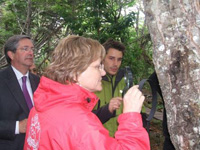 |
Chilean Ministry delegation visits Omoro Park to strengthen links with Antartica February 1, 2011, Puerto Williams, Chile Led by Dr. Jose Retamales, Director of the Chilean Antarctic Institute, the delegation of ambassadors, authorities, scientists and tourism entrepreneurs included Assistant Secretary of Foreign Relations, Fernando Schmidt, Regional Intendenta, Liliana Kusanovic, and Governor of the Chilean Antarctic Province, Nelson Carcamo.
|
 |
UNT Chancellor Lee Jackson discusses university goals on THINK, a KERA television program January 2011 Topic: Competing with the Best |
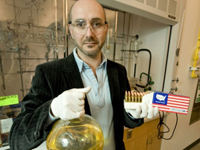 |
Is a Diamond Forever? January 2011 The gunpowder diamond will be the first creation in Mecklenburger’s interdisciplinary art project that explores what people value by producing a series of synthetic diamonds from carbon sources that have little or no market value. By creating diamonds from unusual sources, the project aims to raise awareness of global issues while encouraging a conversation about society’s values. |
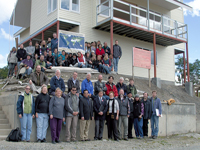 |
UNT opens research field station in Cape Horn, Chile |
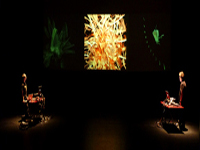 |
iARTA researcher among top ten winners in artificial life competition Jan. 18, 2011 College of Music professor and iARTA cluster researcher, David Stout, and iARTA research associate, Cory Metcalf, earned an honorable mention in the VIDA 13.0 International Art and Artificial Life Competition in Spain for NoiseFold 2.0, a new three-screen interactive sound and cinema work. The competition — sponsored by Fundación Telefónica in Madrid — has become a worldwide benchmark for artistic research into artificial life. A panel of international judges selected 10 works as winners, including NoiseFold 2.0, from the 285 projects presented by artists from 39 countries. UNT’s Initiative for the Advancement of Research in Technology and the Arts, or iARTA, is composed of faculty members across the arts, engineering and sciences who share expertise and create work based on new media applications and evolving technologies. |
 |
Speaker series features leading artists, curators and scholars at the nexus of art, engineering and science Jan. 18, 2011 The Initiative for Advanced Research in Technology and the Arts (iARTA) presents ARTTEC — four evenings of conversation with leading interdisciplinary artists, curators and scholars at the nexus of art, engineering and science. The ARTTEC series invites an international group of prominent iARTA Advisory Board members to UNT to explore emergent art and technology practices across a wide spectrum of disciplines. This freewheeling conversation series, moderated by associated UNT faculty members, will serve as both an informative introduction to the field and delve into some of the ideas redefining artistic practice in light of 21st century challenges and innovations. The ARTTEC conversation series is free and open to the public. (Vist the Art-Tec Speakers Series website for detailed information) |
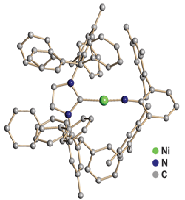 |
Materials Modeling research cluster study highlighted in Chemical and Engineering News Jan. 10, 2011 The active versions of transition-metal complexes in many chemical reactions, such as olefin metathesis and the reduction of nitrogen to ammonia, contain multiple bonds between a metal with a vacant d orbital and a ligand with abundant electron density. But chemists struggle to re-create these reactive intermediates as isolable molecules. |
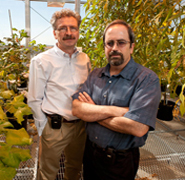 |
UNT researchers help to unravel strawberry genome sequence, will lead to better fruit for consumers
Vladimir Shulaev and Ron Mittler, both professors of biological sciences and researchers in the plant signaling cluster at UNT, collaborated with team of 75 researchers from 38 institutions around the globe, to obtain the genome sequence. The sequence was published in the January issue of Nature Genetics, a science journal that specializes in genetics research. |
 |
Academic Deans invited to submit applications to build new research clusters that address societal problems
UNT Academic Deans have been invited by the Provost and Vice President for Academic Affairs and the Vice President for Research and Economic Development to submit applications to build new research clusters that explicitly focus on addressing societal problems. A memo sent today outlines the plan to stimulate new areas of research development across the university. |
 |
UNT furthers commitment to grow as a research university, expands research cluster program Research at the University of North Texas will continue to expand with a commitment to invest in four new collaborative research clusters and five strategic areas that will advance UNT toward major research university status. As Texas’ fourth largest university with more than 36,000 students choosing to study in its 12 colleges and schools, UNT is the north Texas region’s most comprehensive research university. |
 |
UNT doctoral student wins Comstock award for biology research University of North Texas doctoral student Joe Louis has been selected to receive the 2010 John Henry Comstock Graduate Student Award by the Entomological Society of America. Louis, who currently is working toward his doctoral degree in plant molecular biology, is one of five students across the country chosen to receive the prestigious and highly competitive Comstock award. The award is designed to promote interest in entomology at the graduate level. |
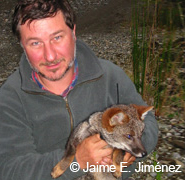 |
Chilean expert to join UNT faculty Jimenez will be part of the Sub-Antarctic Ecosystems and Biocultural Conservation research cluster, hosted at UNT by the Departments of Biological Sciences and Philosophy & Religion Studies in association with Chilean partners including the Universidad de Magallanes and the Institute of Ecology and Biodiversity. This world recognized team collaborates with private agencies and government officials to implement long-term biocultural conservation in the Cape Horn Biosphere Reserve in Chile. |
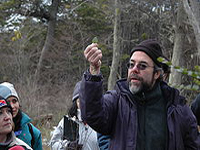 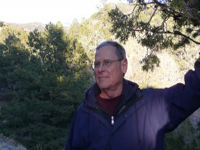 |
Sub-Antarctic program takes second place in world-wide competition IThe Sub-Antarctic Biocultural Conservation Program was recently awarded 2nd place in the 2010 Raanan Weitz Competition, which is an annual, world-wide call for proposals on innovative strategies to achieve sustainable development. |
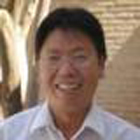 |
UNT taps physics expert for the Bio/Nano Photonics cluster Lin comes to UNT from the University of Texas-Pan American, where he is an associate professor in the Department of Physics and Geology. His research interests, which are supported by some $4 million from the National Science Foundation, include photonics, laser optics, laser-matter interaction, fiber optics, sensors and photonic band gap materials. Lin has extensive expertise in diffractive optical elements and sophisticated laser techniques. This unique combination has allowed him to develop structural components for state-of-the-art photonic devices from inexpensive materials, making the devices particularly cost effective. Potential applications of photonics are virtually limitless, and the technology is currently used in barcode scanners, laser eye surgery and CD, DVD and Blu-ray devices. |
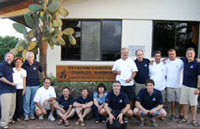 |
Sub-Antarctic Ecosystems and Biocultural Conservation Omora Ethnobotanical Park (Cape Horn) and Charles Darwin Station (Galapagos) Sign Collaborative Agreement Representatives from the academic and tourism sectors from southern Chile and the U.S. held various meetings in Ecuador with the Pontifical Catholic University of Ecuador (PUCE), the International Union for the Conservation of Nature (IUCN), the Regional Office of UNESCO, the Charles Darwin Foundation (CDF) and authorities from the Galapagos National Park and tourism industry. Dr. Francisca Massardo, director of the CORFO project, commented that the goal of these work sessions was “to learn the experience gained in the Galapagos by the Charles Darwin Station and the National Park in topics of ecotourism, since they have been going down this road for 50 years and as archipelagic regions confront some of the same challenges, such as invasive species. |
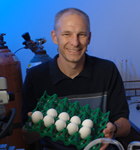 |
Developmental Physiology and Genetics UNT Biology awarded HHMI Research University Grant ($1.3 million) Dr. Edward Dzialowski, associate professor of biological sciences and coordinator of the Developmental Physiology and Genetics research cluster, is a co-PI on this newly awarded grant that will involve the development of a research laboratory course focused on developmental physiology. |
 |
Materials Modeling MMRC Members Take Spotlight in Latest Volume of UNT Research
|
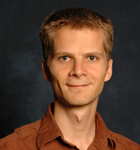 |
David Bithell named faculty fellow for UNT arts institute David Bithell, assistant professor in the College of Music and iARTA cluster coordinator, is one of three University of North Texas faculty members who have been named faculty fellows of UNT's Institute for the Advancement of the Arts for the 2010-11 academic year, giving them time and resources to pursue their creative endeavors. Faculty fellows will be granted release from their other faculty duties during Fall 2010 to work on their projects full time. |
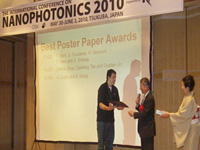 |
UNT student takes best poster award at international nanophotonics conference June 3, 2010 - UNT Department of Physics professors, Arup Neogi, Arkadii Krokhin and three graduate students attended The International Conference on Nanophotonics 2010, a premier conference in this field held in Tsukuba, Japan. Sponsored by the Optical Society of America and co-sponsored by the Optical Society of Japan, the event hosts more than 300 international scientists and researchers who convene to discuss developments in nanophotonics, ranging from bio/energy/environment applications to information technology and fabrication/characterization/modeling. Some of the leading nanophotonics research groups in the world come from East Asia, especially Japan, South Korea, China and Taiwan. UNT students and faculty mentor, Neogi, have been working in close collaboration with Japanese researchers during the past four years. Given the caliber of participation at the conference, it is especially notable that graduate student, Tony Llopis, won the best poster paper award with Neogi for the presentation, "Near-Field Mapping of the Huang-Rhys Parameter," which concerns mapping light emitters in the nanoscale limit. Congratulation, Tony! Neogi will continue this research initiative by traveling to the University of Tokyo this summer for the Japanese Government's Global Center of Excellence project in Nanophotonics. |
 |
iARTA cluster hosts opening of Hybrid Arts Lab The Initiative for Advanced Research in Technology and the Arts (iARTA) cluster invites you to meet its first faculty research hire, David Stout, and attend the opening of HAL, the Hybrid Arts Lab. |
 |
UNT Hires Renowned Plant Science Researchers for Signaling Cluster Internationally renowed researchers, Vladimir Shulaev of Virgina Tech and Ron Mittler of the University of Nevada-Reno, join the Signaling Mechanisms in Plants research cluster. |

